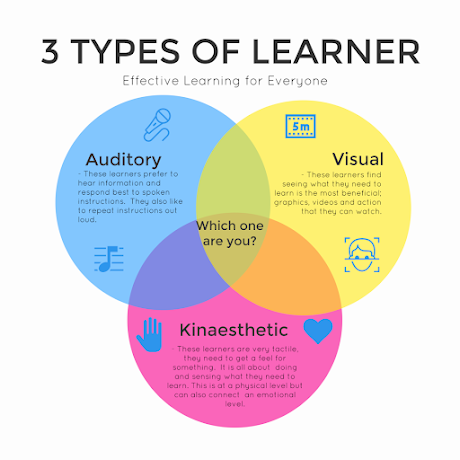Designing a Differentiated Lesson Plan

Differentiated lesson plans ensure that the content, activities, and assessments are personalized to meet the different needs of learners in the classroom. When differentiating lessons, teachers can modify the content, process, product, or learning environment (Corujo, 2023). When differentiating content, teachers present the lesson's information in various ways, such as providing visual aids, implementing audio, or utilizing small group instruction (Corujo, 2023). When differentiating the process, teachers can have students work independently while other students work collaboratively (Corujo, 2023). Differentiating the product consists of teachers implementing various ways for students to show their understanding of the content, such as using choice boards, giving students the option to write a response, give a speech, or create a poster (Corujo, 2023). Lastly, teachers can differentiate the learning environment by changing the classroom layout, providing flexible seating options, or taking students outside (Corujo, 2023).
Differentiating Instructional Strategies
Engaging diverse learners in today's classroom requires teachers to consider students' readiness, interests, and learning styles. Choosing the appropriate instructional strategies allows teachers to differentiate the learning experience for students. Instructional strategies are tools that will enable teachers to assist students in their learning and obtain a greater understanding of the material, as well as allow the learning experience to be more engaging and promote students to be active learners in their education (Persaud, 2023). When evaluating and choosing instructional strategies to differentiate and engage diverse students, I first needed to understand the needs of each student and any potential misconceptions that might arise throughout the lesson. Using students' learning inventories allowed me to enhance students' learning by providing them with various ways to understand the material. Since students were mainly kinesthetic and auditory learners, I tried to choose instructional strategies that would be useful for those learners and incorporate visuals to help students. For instance, I provided opportunities for auditory learners to collaborate with a partner or group to share ideas. Also, embedded instructional videos allow students to follow along to understand the material. For kinesthetic learners, students could create presentations, write their opinions, or play digital games. For visual learners, anchor charts and review videos were used to have students learn and practice the material. When planning for student readiness and interest, a gallery walk was created to pique students' curiosity about their new reading. Also, students watched a video to provide further context on what led Martin Luther King to give his "I Have a Dream" speech so that they understood the reading relatively better when they began reading.
Differentiating Assessments
Teachers need to develop various ways for students to take in the information and show their understanding of it to ensure that students with different learning capabilities, strengths, and needs are considered (Watson, 2020). Providing choice is vital in differentiating assessments because it considers students' strengths, needs, and learning styles (Watson, 2020). For this lesson, assessments were chosen to meet the learners' needs and their learning styles. Depending on the population, students would show their understanding of rhetorical appeals and devices used in the "I Have a Dream" speech by creating an infographic. Another assessment would be to have students create a journal entry where they provide their opinion on the speech and the rhetorical appeals and devices that lead them to their opinion. One last assessment would be to record a video response that discusses the speech's use of rhetorical appeals and devices. To differentiate for ELL and special education students, sentence stems will be given to help sentences construct grammatically correct sentences. Since there are students in the class with IEPs, extra time will be embedded for them to complete the assessment with fidelity. Gifted students can create videos to discuss Martin Luther King's speech and the appeals and devices used. Early finisher students can choose an extension activity from a choice board to further practice determining rhetorical appeals and devices.
Differentiating instruction requires a teacher to continually assess the needs, design, and delivery of instruction that centers around those needs and re-assess the process (Richards, 2023). Using technology, teachers can differentiate lessons tailored to students' levels. Technology can provide teachers with valuable data to help with small group instruction, or when using programs, teachers can find resources that target students' needs (Richards, 2023). Various technology resources are embedded throughout the lesson to enhance student learning. Students utilize technology to help them learn the topics and to show their understanding. Technology resources used in the lesson were Padlet, YouTube, Edpuzzle, Canva, Flipgrid, Kami, and Study.com. Determining the appropriateness of the technology for students depending on their needs and how actively engaged they would be with the technology tool. Canva, Flipgrid, and Padlet allowed students to share their thinking and understanding with their peers and teachers, while Kami, YouTube, and Study.com were used as resources before and during the learning process.
References
Corujo, J. (2023, October 20). How to write a differentiated lesson plan. Houghton Mifflin Harcourt.
https://www.hmhco.com/blog/how-to-write-a-differentiated-lesson-plan
Persaud, C. (2023, June 17). 25 effective instructional strategies for educators. Top Hat.
https://tophat.com/blog/instructional-strategies/
Richards, K. (2023, December 29). How to use technology to differentiate instruction in the classroom. Houghton Mifflin Harcourt.
https://www.hmhco.com/blog/how-to-use-technology-to-differentiate-instruction-in-the-classroom
Watson, S. (2020, January 21). Differentiated instruction and assessment. ThoughtCo. https://www.thoughtco.com/differentiated-instruction-and-assessment-3111341

.png)

.gif)


Comments
Post a Comment